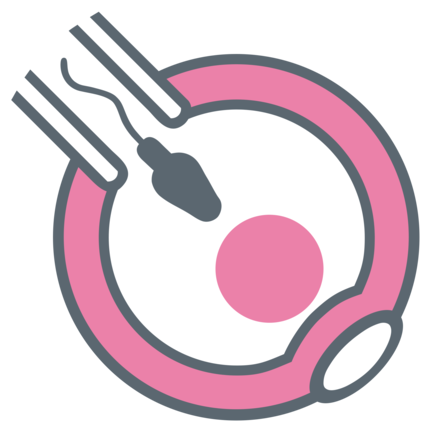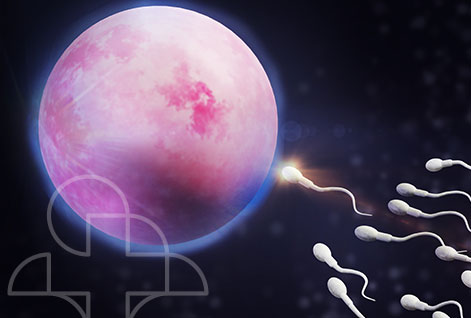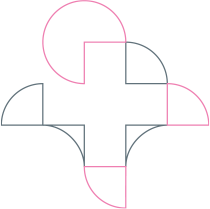In
Vitro Fertilisation IVF

IN VITRO FERTILISATION
What is it?
In vitro fertilisation (IVF) is a treatment that allows the fertilisation of a woman’s eggs with her partner’s or a donor’s sperm in a laboratory (in vitro), in order to obtain embryos for transfer to the uterus. The fertilisation of the eggs can be carried out in different ways according to the criteria of our assisted reproduction team, using conventional IVF or the ICSI technique:
- Conventional IVF: a laboratory technique in which each of the eggs obtained is incubated together with a preparation of the strongest and most active sperm in an embryo incubator that maintains the optimum conditions (similar to those occurring inside the woman’s uterus) for fertilisation and embryonic development to take place.
- ICSI (IVF with intracytoplasmic sperm injection): a very precise laboratory technique that consists of microinjecting a single sperm into a mature egg. As only one sperm is introduced into the oocyte, only one sperm is needed for each oocyte, so it can be done with semen samples that have very few sperm, selecting normal sperm in the case of semen samples with many abnormal sperm or even with immature sperm obtained directly from the testicle by means of a biopsy.
Hand-in-hand with the best medical team and the best technology
IN VITRO FERTILISATION
Who is it for?
Here you will find detailed information on the IVF, ICSI and IVF ICSI methods, designed for those seeking to conceive using modern and effective techniques. Our assisted reproduction team is committed to providing you with the best options for your individual situation.

IVF
- Technique of choice in infertile couples over the age of 37.
- Blocked or damaged fallopian tubes.
- Prior failure of simpler treatments, such as artificial insemination in young couples.
- Ovarian disorders causing the patient to have a limited number of oocytes.
- Advanced endometriosis.
- Moderate changes in semen quality, both in quantity and quality.

ICSI
- Any of the indications for conventional IVF.
- Total absence of sperm in the ejaculate but with the presence of testicular sperm.
- Failed previous fertilisation using conventional IVF with the partner’s semen.


ICSI IVF
- Prior failure of simpler treatments, such as insemination with donated semen.
- Prior failure of ICSI fertilisation using pathological semen from the partner.
- Poor embryo quality or repeated implantation failure in which a male factor is suspected as the main cause.
- Men carrying a genetic disease the study of which in embryos by PGT (Pre-implantation Genetic Testing) is either not possible or not wanted.
- Single women or female couples who are not eligible for donor insemination.
- ROPA technique.
WE ARE
VIDA
IN VITRO FERTILISATION
What does the process involve?
FIRST VISIT
Ultrasound must be done to start the stimulation


Ovarian stimulation:
Sufficient subcutaneous hormone doses are administered to achieve the development of an ideal number of follicles/eggs. This requires regular ultrasound and/or laboratory tests.
Induction of oocyte maturation:
Once adequate follicular development has been observed, a final medication is administered that causes the oocytes to mature.


Follicular puncture and oocyte extraction:
This consists of the puncture and aspiration of the follicles via the vagina to extract the eggs. It is performed in our own clinic under completely aseptic conditions, with ultrasound monitoring and under sedation, so that it is completely painless.
Sperm capacitation:
The man collects a sample of semen which is activated using a simple capacitation technique to select the best motile spermatozoa.
Fertilisation:
After extracting all the oocytes, the mature ones are selected and prepared in the laboratory and then fertilised, either by means of conventional IVF or ICSI, with the semen of the partner or a donor.
Embryo culture and development:
24 hours after fertilisation, a check is made to see how many eggs have been fertilised (zygotes), and they are kept in culture in an EmbryoScope Plus® incubator that creates the ideal conditions for embryo development without the need to remove them thanks to the Time-Lapse control system (taking a photo of each embryo every few minutes).
Embryo selection and transfer:
On days 5–6 post-fertilisation, the embryos that have developed correctly reach the blastocyst stage. At this time, the best embryo is selected to be placed in the woman’s uterus. The transfer is carried out with ultrasound guidance using a fine cannula in a completely painless procedure that allows the embryo to be deposited inside the uterus without damaging the endometrium.
Vitrification of unused embryos:
If more embryos have been obtained (which is usually the case) they are vitrified (frozen) so that they can be used to try to achieve new pregnancies without having to carry out all the previous steps.
Luteal phase treatment and pregnancy monitoring
After the embryo transfer, a period of relative rest is recommended for 24–48 hours. The patient can then lead a completely normal life. Supplementation with oral or vaginal progesterone is usually administered to facilitate embryo implantation and a blood pregnancy test is performed after 14 days.
We have helped create more than
100,000 lives

IN VITRO FERTILISATION
How effective is it?
Efficacy depends on numerous factors related to the partner or donors, the most relevant being the age of the patient. In general, the success rate ranges from 30–50% of pregnancies per transfer, as it is a treatment that depends very much on the medical conditions of each patient.
Technological advances have allowed thousands of couples and women to fulfil their dream of becoming parents
FREE DIAGNOSIS
Request your first consultation and comprehensive diagnosis free of charge
now
WHAT DOES IT INCLUDE?
- First Consultation
- 3d Echo
- AMH
- Seminogram
- Psychological Assessment
- Nutritional Assessment
- Consultation on Results
LIFE STORIES
Dreams come true
Every journey to motherhood is unique and special, and we are proud to have helped create more than 100,000 lives so far. Our team of doctors and specialists is committed to providing attentive and honest treatment, ensuring that we offer the best possible care throughout the process.

BRUNO returns six years later.
Federica tells us about her experience
Eloísa and Estéfano make their dream come true
vida
Helps you take the
first steps

Avec nous, vos rêves prennent vie
Contact
Burgos: Centro Médico Recoletas Salud
Virgen del Manzano -Calle Antonio Machado, 9
Cantabria: Avd. de los Condes s/n - Santa Cruz de Bezana
León: Calle Lope de Vega, 9
Murcia: Calle Periodista Encarna Sánchez, 26
Pamplona: Calle Isaac Albéniz 7 - Bajo
Sevilla: C. Américo Vespucio, 19
Informations légales
Vous êtes informé(e) que vos données seront traitées par l'HOSPITAL RECOLETAS DE CASTILLA LEÓN, S.L.U., qui agira en tant que responsable des données dans le but de répondre à votre demande et, le cas échéant, nous prendrons les mesures nécessaires pour y répondre, sauf mention contraire de votre part. La légitimité de ce traitement reposera sur votre consentement. Vous pourrez exercer vos droits d'accès, de rectification, de suppression, d'objection, de restriction et de portabilité conformément à la politique de protection des données, ou par écrit à l'adresse Calle Constitución 8, 1º, 47001, Valladolid, Espagne. Vous pourrez également déposer plainte auprès de l'organisme espagnol de protection des données. Vous pourrez consulter notre politique de confidentialité, qui vous donnera des informations complémentaires et détaillées sur le traitement des données à caractère personnel.

We went on the recommendation of some friends and we are very happy with the result. The treatment is very personal and always honest. We were seen by Dr. Natalia Gozalo, to whom we are very grateful. Our baby was born a few months ago and the whole process went very smoothly. Treatments like this are costly and difficult, but if you need them, Clínica Vida is a good option.
– Carmen



